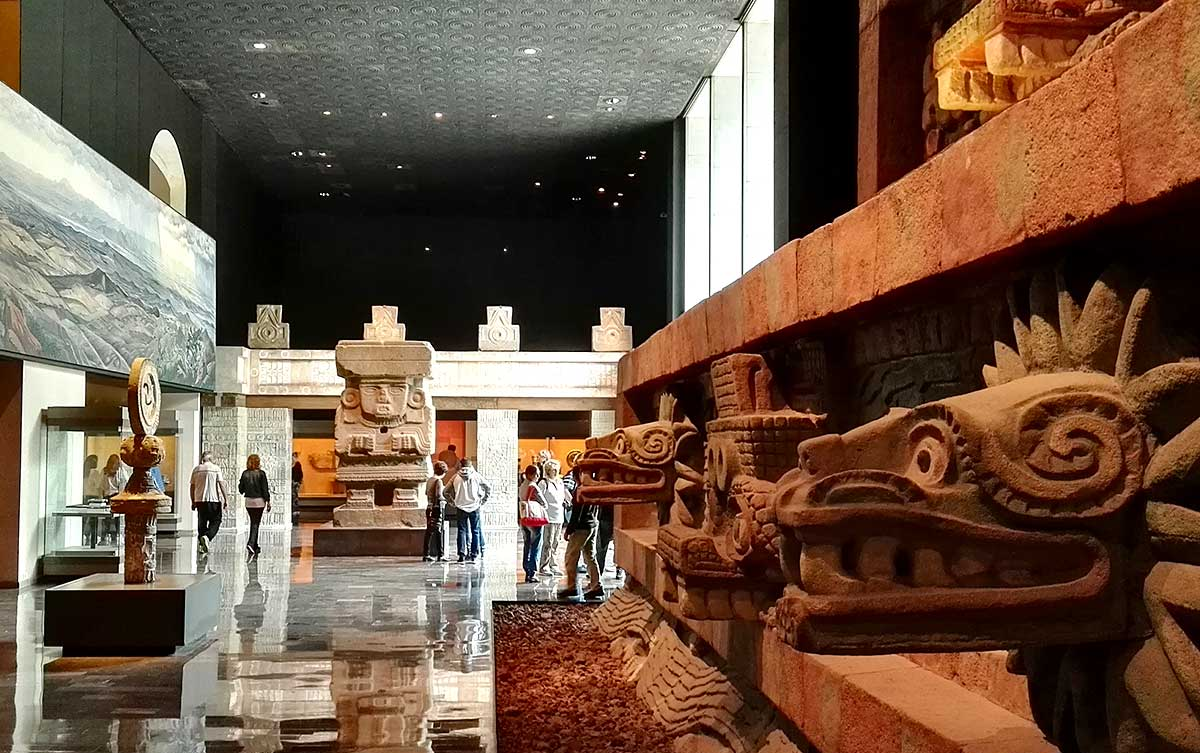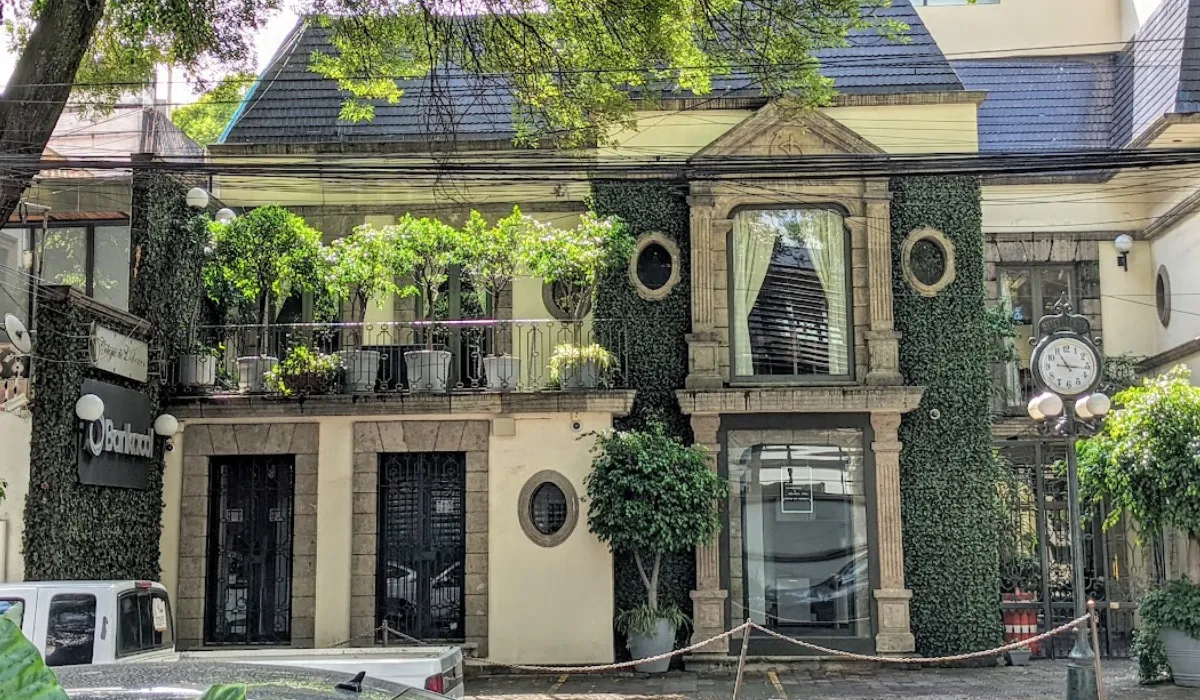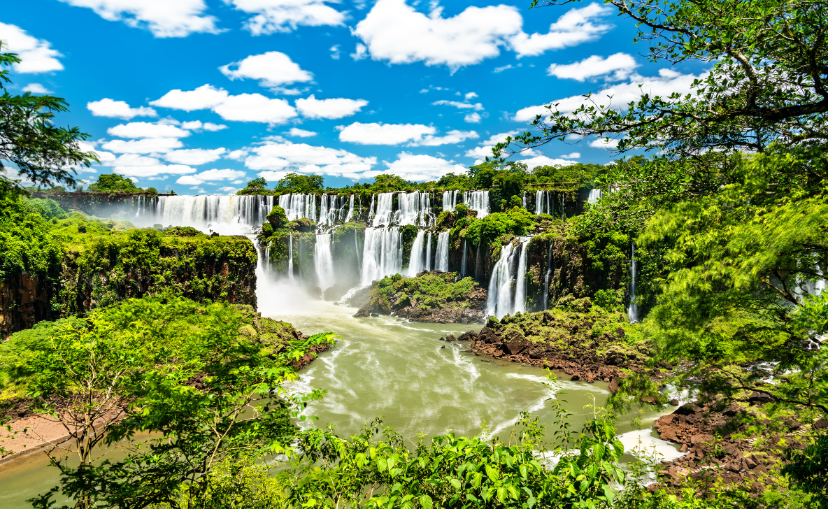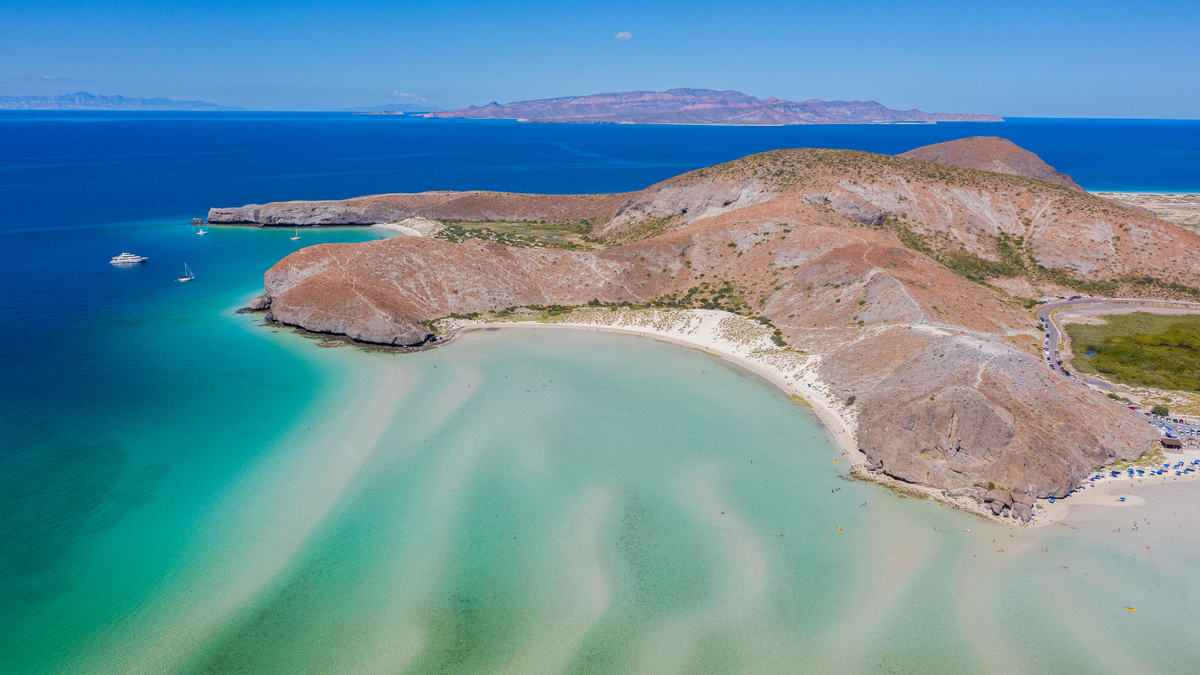Mexico City Travel Guide For Explorers In 2025
This Mexico City travel guide will provide you with essential tips, must-visit neighborhoods, top hotels, and the best dining spots, including hidden gems and world-renowned restaurants. Whether a long or short trip, this guide will make sure it's a great experience.

Essential Tips for Your Mexico City Adventure
Let's start this Mexico City Travel Guide with some tips to get you started.
- Currency and Payments: While credit cards are widely accepted, carry some pesos for street food and markets. Don't miss out on the vibrant street food scene!
- Getting Around: Use Uber for affordable and easy transportation. Walking is the best way to explore neighborhoods, but Uber is handy for longer trips.
- Weather: Mexico City's weather is pleasant year-round, so there's no bad time to visit.
- Dining Times: Adopt the local dining schedule—lunch around 3 PM and dinner later in the evening. Some places may close for siestas, so plan accordingly.
- Trip Duration: 4-5 days is ideal for a thorough visit. If you're short on time, stay centrally and make reservations for top restaurants and museums.
Favorite Things I Did While Visiting Mexico City
During my six days in Mexico City, I made it my mission to soak up as much of the city’s rich history and vibrant culture as possible. There’s something fascinating around every corner, and I found myself constantly torn between wanting to explore the ancient ruins, modern art galleries, and stunning colonial architecture. Here’s a bit about what I experienced and some of the city’s top attractions that you just can’t miss.

I started with Museo Frida Kahlo, also known as the Blue House. Walking through the artist’s former home felt like stepping into a piece of history. The vibrant blue walls and the personal items on display gave me a real sense of her life and work. From there, I headed to Museo Nacional de Antropología.

This museum is hands down a must-see. It houses one of the most impressive collections of pre-Columbian artifacts, including the Aztec Sun Stone. I spent hours wandering through the exhibits, marveling at the ancient sculptures and learning about the rich history of Mesoamerican civilizations.
Of course, I couldn’t skip the historic center. The Zócalo is breathtaking in person—one of the largest public squares in the world, surrounded by stunning architecture. I visited the Metropolitan Cathedral, which is massive and filled with beautiful altars and artwork. Then, I took a stroll to the Templo Mayor, where you can see the ruins of the Aztec capital Tenochtitlan right in the heart of modern Mexico City. The contrast between the ancient stones and the surrounding cityscape is surreal.

I also made sure to visit Chapultepec Park and its famous Chapultepec Castle, which sits high on a hill with panoramic views of the city. The castle itself is beautiful, and it’s full of historical exhibits that make it worth the trek up. And for something completely different, I took a day trip to Teotihuacan, just outside the city. Climbing the Pyramid of the Sun and looking out over the Avenue of the Dead was a highlight of my trip—it's hard to believe something that ancient and grand exists just an hour from Mexico City. I don't want to bore you with every little thing that I did, so those are just the highlights—here's a list of all the top attractions in the city that you will want to try and see most of depending on how long you can stay.
There are things online that say you can't climb Pyramid of the Sun, but that is wrong and literally hundreds of people per day are climbing it and you can find endless videos on YouTube of people doing just that.
- Museo Frida Kahlo (Blue House): A colorful tribute to the life and art of Frida Kahlo.
- Museo Nacional de Antropología: The ultimate museum for anyone interested in ancient Mesoamerican cultures.
- Zócalo: The city’s central square, surrounded by iconic buildings like the Metropolitan Cathedral and National Palace.
- Templo Mayor: Ruins of the ancient Aztec temple complex right in the city center.
- Chapultepec Castle: A beautiful castle with incredible views over Chapultepec Park.
- Teotihuacan: Ancient pyramids that offer a breathtaking glimpse into pre-Hispanic Mexico.
- Palacio de Bellas Artes: A stunning art nouveau building with murals by Diego Rivera and a world-famous stained-glass curtain.
- Coyoacán: A charming neighborhood perfect for wandering, with cobblestone streets, local markets, and the Blue House.
- Xochimilco: Float along the colorful canals on a traditional trajinera and enjoy live music from mariachi bands.
- Roma & Condesa: Trendy neighborhoods with great cafes, bars, and beautiful parks like Parque México.
Hidden Gems Of Mexico City
Every corner of Mexico City offers something different, from its ancient roots to its modern creative energy. It’s a city where you can spend your mornings exploring centuries-old pyramids and your afternoons sipping coffee in a hip, tree-lined neighborhood. And that’s what makes Mexico City such an unforgettable place to visit.
During my time in Mexico City, I made it a point to explore beyond the typical tourist spots, diving into some of the city's hidden gems that most travelers might miss. These places offered a unique perspective on the city’s rich history and vibrant culture. Here are some of the standout hidden gems I discovered:
La Casa de los Azulejos (House of Tiles)

Tucked away in the bustling historic center, La Casa de los Azulejos is a beautiful building covered in intricate blue and white tiles. While it’s close to other popular attractions like the Palacio de Bellas Artes, many tourists walk right past it. Inside, you’ll find a lovely old-world café and restaurant, perfect for a quiet breakfast or afternoon coffee, surrounded by the stunning architecture of a bygone era. It’s a great spot to take a break and soak in some of the city’s history.
Parque Masayoshi Ohira

This tranquil park is a little slice of Japan right in the heart of Mexico City. Located in the Coyoacán neighborhood, Parque Masayoshi Ohira is a hidden oasis that features traditional Japanese landscaping, koi ponds, and a serene atmosphere. It’s the perfect place to escape the city’s hustle and bustle for a while, and it felt like a secret retreat, where I could sit by the water and unwind.
Museo del Juguete Antiguo México (Old Toy Museum)

One of my most unexpected finds was the Museo del Juguete Antiguo México, or the Old Toy Museum, in the Doctores neighborhood. It’s a quirky, nostalgia-filled space with floor after floor of vintage toys and collectibles. You won’t find the polished displays of larger museums here, but that’s part of its charm. It’s a little chaotic, a little messy, but packed with character. Wandering through its rooms, I felt like I was on a treasure hunt, discovering bits of Mexico’s pop culture from decades past.
La Ciudadela Artisan Market

Everyone knows about the markets in Mexico City, but La Ciudadela stands out as a hidden gem for authentic Mexican crafts without the overwhelming crowds of other markets. Located near the Alameda Central, this artisan market is a quieter alternative to Mercado de Coyoacán or La Merced, with vendors selling beautiful handwoven textiles, pottery, and jewelry. It’s a fantastic spot for picking up unique souvenirs, and I found myself chatting with local artisans, learning about their craft and the stories behind their work.
Cantina Tío Pepe

For a more local nightlife experience, Cantina Tío Pepe in the Centro Histórico became a favorite. It’s one of the oldest cantinas in the city and retains a genuine, old-school charm that’s hard to find these days. The place has seen better days, but its timeworn wooden bar, walls lined with vintage posters, and friendly atmosphere made it feel like stepping back in time. The drinks are affordable, and it’s a great place to get a real sense of how locals enjoy a night out—without the touristy flair.
Jardín del Arte Sullivan

Every Sunday, Jardín del Arte Sullivan in Colonia San Rafael transforms into an open-air art market. It’s a wonderful place to wander through, with local artists displaying their work, from traditional Mexican paintings to modern pieces. I spent a few hours here, chatting with artists about their inspirations and picking up a small painting as a keepsake. The vibe is relaxed, and it’s a perfect spot to experience Mexico City’s creative side without the formality of a gallery.
Café La Habana

Café culture is huge in Mexico City, but Café La Habana in Colonia Juárez has a unique historical edge. Open since the 1950s, this unassuming café is known for being a meeting spot for writers and revolutionaries—legend even has it that Fidel Castro and Che Guevara planned part of the Cuban Revolution here. Stepping into the café, you get a sense of that history, with its retro décor and traditional Mexican coffee. It’s the kind of place where you can sit for hours, people-watching and soaking in the stories of the past.
These hidden gems of Mexico City added depth to my visit, giving me a chance to see a different side of the city—one that’s a little quieter, a little more personal, and just as full of character.
Best Neighborhoods In Mexico City When Visiting As A Tourist
When I visited Mexico City, I quickly realized that choosing the right neighborhood to stay in is so important, which I didn't realize prior to arriving as I am not much into the small details of my adventures and just go with the flow. But.....This city is massive! In fact it's the largest city in North America, and each neighborhood has its own personality and pace—some are bustling and full of nightlife, while others are more laid-back and perfect for a quiet escape.
It’s not just about convenience—it's about finding a place that fits the kind of vibe you want for your trip. A good neighborhood can make exploring the city feel like a seamless adventure rather than a stressful journey through traffic and crowds.
My Recommended Neighborhoods For You To Stay In:
Centro Historico Neighborhood

Centro Histórico, the neighborhood that’s truly the beating heart of Mexico City. This place is like stepping into a vibrant blend of history and modern life. From bustling markets to colonial-era buildings, it’s where the city’s past and present come together in a way that just pulls you in. The streets are lively with locals and tourists, each discovering a new story around every corner.
The vibe is electric—cafes spilling onto sidewalks, mariachi bands playing in plazas, and museums that offer glimpses into Mexico’s deep roots. As you wander through this area, you feel a sense of connection to the city’s rich cultural heritage. And honestly, it’s one of those places where you could spend days exploring without running out of things to do.
Attractions Located in Centro Histórico
- Zócalo (Plaza de la Constitución)
- Metropolitan Cathedral (Catedral Metropolitana)
- Templo Mayor
- Palacio de Bellas Artes
- Alameda Central
- Diego Rivera Mural Museum (Museo Mural Diego Rivera)
- House of Tiles (Casa de los Azulejos)
- Mercado de San Juan
- Torre Latinoamericana
- Palacio Postal (Postal Palace)
Each spot has its own charm, and together, they make Centro Histórico a must-visit neighborhood in Mexico City. If you love a place that combines history, culture, and a whole lot of local flavor, you’ll feel right at home here.

Polanco Neighborhood

When I visited the Polanco Neighborhood, I felt like I had stepped into the fanciest part of Mexico City. It’s definitely the most upscale and sophisticated neighborhood I experienced in the city. This area is where modern luxury meets cultural richness—think tree-lined streets, high-end boutiques, and some of Mexico City’s best restaurants, all located close together.
As I wandered around, I loved how the area balanced its sleek, polished vibe with pockets of green, like Parque Lincoln, where you can take a peaceful stroll among beautiful sculptures and serene ponds. The park gives the neighborhood a calm, relaxing feel amidst the city’s busy pace. And then, there’s the Museo Soumaya, an architectural gem that immediately catches your eye with its futuristic design. Inside, it houses an incredible art collection that spans centuries, making it a must-see for art lovers.
Polanco felt like a perfect blend of cosmopolitan energy and refined charm. It's the kind of neighborhood where you can spend an afternoon exploring luxury stores along Avenida Presidente Masaryk (often called the Fifth Avenue of Mexico City), and then end the day at a world-class restaurant like Pujol or Quintonil—both of which are renowned as some of the best in the world. If you’re up for a night out, the rooftop bars offer stunning views of the city skyline, and sipping a cocktail while taking it all in makes you feel like you’re living the high life in CDMX.
Attractions in the Polanco Neighborhood:
- Parque Lincoln
- Museo Soumaya
- Museo Jumex
- Avenida Presidente Masaryk (luxury shopping street)
- Chapultepec Park (nearby, with a vast green space and cultural institutions)
- Pujol (famed restaurant by Chef Enrique Olvera)
- Quintonil (one of the top-ranked restaurants in Latin America)
- Antara Fashion Hall (upscale shopping mall)
- Auditorio Nacional (nearby for concerts and events)
- Rufino Tamayo Museum (near the border with Chapultepec)
Polanco is truly a spot that offers a little bit of everything—luxury, culture, and leisure—all wrapped up in one stylish package. If you're visiting Mexico City and want to experience its more sophisticated side, Polanco should definitely be on your list.

Condesa – Roma Neighborhoods
When exploring the Condesa and Roma Neighborhoods, I felt like I was stepping into the heart of Mexico City’s vibrant, modern culture—yet with a comforting touch of nostalgia. These two neighborhoods sit side by side, and while they share some similarities, each has a character that sets it apart. It’s like exploring two distinct yet harmonious worlds, making them both a must-see for anyone visiting the city.
Condesa Neighborhood:
In Condesa, the vibe is relaxed and effortlessly stylish. The neighborhood is filled with art deco buildings and tree-lined streets, making it the perfect place for a leisurely walk. I loved how green it felt, thanks to Parque México and Parque España—two beautiful urban parks where you can catch locals jogging, walking their dogs, or simply enjoying the shade. The cafes here have a vintage charm, and I could easily spend a whole afternoon sipping coffee at a sidewalk café, just watching the world go by. It’s the kind of place where you feel like time slows down a bit, which is a refreshing change in such a bustling city.
Roma Neighborhood:
Roma, on the other hand, has this edgier, more artistic energy. As soon as I crossed over from Condesa into Roma Norte, I noticed the shift—street art started appearing on building walls, and the boutiques had a quirky, curated vibe that I couldn’t resist checking out. This neighborhood is a paradise for food lovers, with trendy restaurants, hip bars, and hidden mezcalerías that serve up some of the best flavors of the city. It’s the kind of place where you can stumble upon a great taco spot right next to an avant-garde art gallery. There’s this raw, creative energy in Roma that feels like the neighborhood is constantly reinventing itself, making it a perfect spot to discover something new with every visit.
The beauty of Condesa and Roma is how seamlessly they complement each other. In Condesa, you can soak up the laid-back, bohemian atmosphere with a bit of nature and a whole lot of charm. Then, in Roma, you get a taste of the city’s cutting-edge side—full of innovation, creativity, and delicious surprises. Both neighborhoods are a testament to the dynamic spirit of Mexico City, making them a perfect duo for any traveler wanting to experience the city’s cultural richness. If you have the time, I recommend exploring them both; you’ll find that each has something special to offer.
Attractions in Condesa – Roma Neighborhoods:
- Parque México
- Parque España
- Casa Lamm
- Fuente de Cibeles
- Museo del Objeto (MODO)
- Galería OMR
- Mercado Roma
- Cultural Center of Spain (Centro Cultural España)
- Alvaro Obregón Avenue (known for its vibrant nightlife in Roma)
- Tonalá Cinema (for indie films and events)
These two neighborhoods, with their distinct yet complementary vibes, show off some of the best sides of Mexico City—whether you're in the mood for a relaxing day in a park or an adventure through the latest foodie hotspots.

Zona Rosa Neighborhood
The Zona Rosa neighborhood is a lively and colorful area that never seemed to slow down, day or night. It has a welcoming atmosphere, making it a favorite among both locals and tourists alike. Here, you can feel the pulse of the city with its busy streets, a diverse mix of bars, and an energetic nightlife.
Walking through Zona Rosa, I couldn’t miss the unique blend of modern and traditional elements, from its Korean influences in Little Seoul to the classic architecture that hints at the neighborhood's trendy past from the 1960s. The area is filled with coffee shops, international restaurants, and quirky shops that make it perfect for an afternoon of exploration. Genova Street, a pedestrian-friendly walkway lined with cafes and boutiques, is an ideal spot to wander and watch the city unfold.
It’s a lively part of Mexico City that offers something trendy bars, international restaurants, and an electric nightlife scene. While parts of the neighborhood are known for being a bit of a gayborhood, with rainbow crosswalks and LGBTQ+-friendly spots, it’s also a place where you’ll find people from all walks of life enjoying the bustling atmosphere. The mix of cultures and the neighborhood's lively energy make it an intriguing area to explore, whether you’re looking for a fun night out or just want to experience a different side of Mexico City.
Zona Rosa is also incredibly well-connected, making it a convenient base for exploring the city. Located just a short walk from Paseo de la Reforma and close to Chapultepec Park, it’s an ideal spot for those who want to be right in the heart of the action. It’s the kind of place where you can start your day with a stroll past the Monumento a la Independencia (El Ángel), explore a gallery or two, and finish with a night out at one of the many buzzing bars or clubs.
Attractions in Zona Rosa Neighborhood:
- El Ángel de la Independencia (Angel of Independence)
- Genova Street (Pedestrian walkway)
- Little Seoul (Korean neighborhood within Zona Rosa)
- Museo de Cera (Wax Museum)
- Ripley’s Believe It or Not! Museum
- Reforma 222 (Shopping center)
- Bars and clubs along Calle Amberes
- Galería José María Velasco (Contemporary art gallery)
Zona Rosa offers a little bit of everything—whether you’re looking for nightlife, cultural diversity, or a place where you can feel the city's energy. It’s a great spot to experience the modern, cosmopolitan side of Mexico City while still getting a sense of its rich cultural roots. If you enjoy being in the center of the action with endless dining and entertainment options, Zona Rosa should be on your list.

Recommended Hotels For Each Neighborhood
Centro Histórico Neighborhood
Hotel Zócalo Central

- Why it’s great: Situated right near the Zócalo, Mexico City’s main square, this hotel offers easy access to some of the city’s most iconic landmarks, like the Metropolitan Cathedral and the Templo Mayor. It has a beautiful rooftop terrace with views of the Zócalo, and guests love the blend of historical charm and modern comfort.
- Price Range: Mid-range, offering excellent value given its central location and stunning views of the historic center.
Polanco Neighborhood
Habita Hotel -A Member of Design Hotels

- Why it’s great: Located on Avenida Presidente Masaryk, Polanco’s main upscale shopping street, Hotel Habita offers a sleek, modern design with a chic rooftop pool and bar. It’s within walking distance to attractions like the Museo Soumaya, the Museo Nacional de Antropología, and some of the city’s top restaurants.
- Price Range: Mid-range, providing a luxurious yet more affordable option compared to Polanco’s pricier hotels.
Condesa – Roma Neighborhoods
Casa Decu

- Why it’s great: A boutique hotel in the heart of Condesa, it’s just steps away from Parque España and Parque México. It offers a cozy, laid-back atmosphere with a stylish rooftop terrace that’s perfect for enjoying a drink while overlooking the tree-lined streets, massive suites, with breakfast included. Its location also makes it easy to explore the cafes, art galleries, and trendy eateries of both Condesa and Roma.
- Price Range: Mid-range, ideal for travelers seeking style without the luxury price tag.
Zona Rosa Neighborhood:
Hotel Geneve Mexico City

- Why it’s great: Located in the heart of Zona Rosa, this hotel is rich in history and charm. It’s close to the vibrant nightlife scene and just a short walk from Paseo de la Reforma. Guests appreciate the classic decor and excellent service, as well as its proximity to metro stations for easy access to other parts of the city.
- Price Range: Mid-range, offering comfort and charm at a reasonable price, with easy access to the area’s entertainment and shopping.
Each of these hotel choices balances comfort, location, and price, making them solid options for enjoying the unique vibes of Mexico City’s diverse neighborhoods.
Mexico City Is A Food Lovers Paradise

Mexico City is a foodie paradise, especially if you love street foods. Although Southeast Asia is #1 in my book for street food, Mexico and south of the Untied States more generally comes in a strong 2nd place.
The city offers a mix of traditional flavors and creative twists on Mexican classics. During my visit, I made sure to explore some of the city's top food spots, each offering a memorable experience. Here are five places I tried that you absolutely need to add to your list:
El Huequito – For Tacos al Pastor

- Location: Historic Centro
- Why You Should Go:
Tacos al Pastor is a must-try in Mexico City, and El Huequito is known for serving up some of the best. They’ve been perfecting their recipe since 1959, and you can taste the tradition in every bite. The juicy pork, marinated in a blend of spices and cooked on a vertical spit, is served with a slice of pineapple on a warm tortilla. The mix of sweet, savory, and a little spice hits just right. - What I Loved:
The simplicity of a taco al pastor done perfectly. I ordered a few tacos, each with generous portions of tender meat, and topped them with fresh salsa from the self-serve station. It’s the kind of spot where you end up eating more than you planned because each bite is so satisfying.
Contramar – For Seafood Lovers

- Location: Roma Norte
- Why You Should Go:
If you’re craving fresh seafood, Contramar is a standout. It’s become famous for its tuna tostadas, with thin slices of tuna, crispy leeks, and a creamy chipotle mayo. Another must-try is their pescado a la talla—a split-grilled fish, half covered in red chili adobo and the other half in a green parsley sauce. - What I Loved:
The lively atmosphere and bright decor make it feel like a coastal escape in the middle of the city. I couldn’t get enough of the tuna tostadas—they were fresh, light, and packed with flavor. It’s a bit pricier, but totally worth it for a nice lunch or dinner in the heart of Roma.
Pujol – The Elevated Mexican Experience

- Location: Polanco
- Why You Should Go:
Pujol is one of those places you need to visit if you’re looking to experience Mexico City’s high-end dining scene. Chef Enrique Olvera's take on traditional Mexican ingredients is nothing short of mind-blowing. The mole madre—a rich, complex sauce aged for over 1,000 days—served alongside a fresh mole is a dish I still think about. Every course on the tasting menu feels like a journey through Mexican cuisine. - What I Loved:
I appreciated how they took dishes that felt familiar and turned them into something entirely new. It’s a splurge for sure, but the level of thought that goes into each dish makes it an unforgettable experience. If you’re a foodie, this place is a must.
Quintonil – A Taste of Contemporary Mexico

- Location: Polanco
- Why You Should Go:
Quintonil is another gem in Polanco, offering a fresh, modern twist on Mexican ingredients. The menu changes with the seasons, but the crab tostada with lime and cucumber and the nixtamalized vegetable salad were a revelation. The flavors here are refined yet rooted in tradition, and you can tell they focus on using local produce. - What I Loved:
The cozy, unpretentious atmosphere made it feel inviting despite being a fine-dining spot. The staff was incredibly knowledgeable about each dish, and their passion for the ingredients really came through. It’s the kind of place where you leave feeling like you’ve had a truly unique dining experience.
Taquería Los Cocuyos – For Street Food Vibes

- Location: Historic Centro
- Why You Should Go:
You can’t visit Mexico City without indulging in some classic street food, and Taquería Los Cocuyos is the place for an authentic taco experience. They’re famous for their tacos de suadero (slow-cooked beef) and tacos de lengua (beef tongue). The stand is small, with just a few stools, but you’ll find people lining up late into the night. - What I Loved:
The rich, greasy goodness of each taco. They serve them straight from a bubbling pot of meat, right onto a fresh tortilla. Add a squeeze of lime, some onions, and a bit of their salsa, and you’ve got yourself one of the best bites in town. It’s unpretentious, delicious, and one of those places where you feel like you’re eating with the locals.
These spots each bring a different flavor to the table—whether you're in the mood for street tacos, elevated dining, or a cozy seafood lunch, Mexico City’s food scene will leave your taste buds watering, and happy.
Mexico City Travel Budget
When planning a trip to Mexico City, one of the great advantages is that it’s a destination that can fit various budgets, from affordable stays to more luxurious experiences. Here’s what you can expect when it comes to costs for lodging, food, and attractions.
Lodging Costs
- Budget Options: If you’re traveling on a budget, you’ll find plenty of hostels and guesthouses starting from around $15 to $30 USD per night. These options are typically found in areas like Centro Histórico or Condesa, and they provide a great opportunity to meet fellow travelers while keeping costs low.
- Mid-Range Hotels: For those who want a bit more comfort without splurging, you can find a range of boutique hotels and well-known chains in neighborhoods like Roma, Condesa, or Polanco, with nightly rates around $60 to $120 USD. These often come with perks like free breakfast, cozy interiors, and great locations near the city’s key sights.
- Luxury Stays: If you’re looking to treat yourself, Mexico City has some incredible luxury hotels, especially in Polanco or Santa Fe. Expect to pay around $150 to $400 USD per night for a high-end experience, with options like Hotel Carlota or Las Alcobas. These spots offer amenities like rooftop pools, upscale dining, and stunning city views.
Food Costs
- Street Food & Markets: Mexico City is famous for its street food, and this is one of the best ways to keep food costs low while enjoying some of the city’s tastiest bites. Tacos, quesadillas, tortas, and tamales will typically cost you between $1 to $2 USD each. A full meal from a food stall or market stand might set you back around $3 to $6 USD.
- Casual Restaurants: Sit-down meals at local restaurants can be very affordable, especially if you explore places like Mercado Roma or Mercado de San Juan. At a typical mid-range restaurant, you can expect to spend $8 to $15 USD per person for dishes like enchiladas, mole, or a plate of chilaquiles.
- Fine Dining: Mexico City also has a world-renowned dining scene, with high-end restaurants like Pujol, Quintonil, and Rosetta. A meal at these places can cost around $80 to $150 USD per person (without wine pairings). While it’s a splurge, it’s also a chance to experience innovative takes on Mexican cuisine that you won’t find anywhere else.
Attraction Costs
- Museums and Cultural Sites: Mexico City is known for its wealth of museums, many of which are quite affordable. Entry to places like the Museo Nacional de Antropología or Frida Kahlo Museum typically ranges from $5 to $10 USD. Some museums, like the Palacio de Bellas Artes, are free on Sundays, making it easier to explore on a budget.
- Guided Tours: If you’re interested in guided tours or day trips, such as visiting the Teotihuacán pyramids or taking a boat ride through Xochimilco, you can find options ranging from $20 to $50 USD per person. Prices vary depending on whether transportation and meals are included.
- Public Transportation: Getting around Mexico City is incredibly budget-friendly. A metro ticket costs just $0.30 USD, and buses and colectivos are similarly priced. Ride-sharing apps like Uber are also popular and generally cheaper than taxis, with fares for short trips often around $3 to $7 USD.
Total Daily Budget
Depending on your travel style, here’s a rough estimate of what you might spend per day in Mexico City:
- Budget Travelers: Around $30 to $50 USD per day, covering hostel stays, street food, and a few low-cost attractions.
- Mid-Range Travelers: Approximately $70 to $150 USD per day, including a comfortable hotel, meals at casual restaurants, and admission to a few museums or a guided tour.
- Luxury Travelers: Expect to spend $200+ USD per day if you’re staying at upscale hotels, dining at top restaurants, and booking private tours.
Overall, Mexico City offers incredible value, whether you’re looking to save or willing to splurge a little. It’s a city where you can indulge in great food, rich cultural experiences, and vibrant neighborhoods without breaking the bank.
When I spent six nights in Mexico City, I tried to keep a good balance between enjoying the best the city has to offer and keeping my wallet happy. Here’s a rough breakdown of what I ended up spending:
My Accommodations
I stayed at a mid-range boutique hotel in Condesa, which offered a cozy room and breakfast each morning. It wasn’t the cheapest option, but it was worth it for the great location—right by Parque México and within walking distance of great cafes and restaurants. My room cost me about $90 USD per night, so for six nights, I spent around $540 USD on lodging.
My Food Cost
I definitely indulged when it came to food. I couldn’t resist all the amazing street food, so I had tacos and tortas for lunch most days, which usually cost about $3 to $5 USD per meal. For dinner, I alternated between casual restaurants and a couple of nicer spots, like a dinner at Rosetta which set me back about $100 USD (but worth every penny). On average, I spent around $30 to $40 USD per day on food, which adds up to about $240 USD for six days.
My Activities and Attractions Cost
I visited a few key spots, like the Frida Kahlo Museum, Museo Nacional de Antropología, and took a day trip to Teotihuacán. Entry fees and tours cost me roughly $10 to $20 USD per day, depending on where I went. All in all, I probably spent around $120 USD on attractions and activities over the six days.
My Transportation Cost
I mostly used the Metro and Uber to get around the city. The metro is super cheap, but I used Uber more often when I was going out at night or traveling longer distances. I ended up spending around $5 to $10 USD per day on transportation, totaling around $50 USD for the trip.
My Souvenirs and Extras
Of course, I couldn’t resist picking up some souvenirs from local markets, like a hand-painted skull and some delicious Mexican chocolate. I spent about $80 USD on gifts and little extras.
Here’s the final breakdown of my expenses:
- Lodging: $540 USD
- Food: $240 USD
- Attractions: $120 USD
- Transportation: $50 USD
- Souvenirs: $80 USD
Total: $1,030 USD for six nights.
This budget let me enjoy a bit of everything without feeling too restricted—good food, a few splurges, and all the sightseeing I wanted to do. You can definitely spend less or more depending on your travel style, but for me, it felt like the right balance between comfort and adventure!
Safety In Mexico City
When I visited Mexico City, I was pleasantly surprised by how safe it felt overall. I spent a lot of time wandering around popular neighborhoods like Condesa, Roma, and Polanco—day and night—and I never once felt uneasy. The streets were lively with people enjoying their evening walks, grabbing tacos at late-night stands, or just soaking up the city’s energy. I used Uber to get around after dark and found the drivers to be friendly and professional. For the most part, the city felt welcoming, vibrant, and comfortable for exploring.
That being said, it’s important not to ignore the statistics. Yes, Mexico City does have higher crime rates compared to some parts of the United States, but it’s all about putting those numbers in perspective. Many of the issues stem from organized crime and gang-related violence, which rarely affects tourists. If you look at violent crime statistics, you’ll find that Mexico City’s crime rates are comparable to or even lower than many major U.S. cities like Chicago or New Orleans. Plus, just like in the U.S., crime in Mexico City is often concentrated in specific areas—most of which tourists have no reason to visit.
When you dig into the numbers, you’ll see that the likelihood of a tourist becoming a victim of violent crime in Mexico City is extremely rare. The vast majority of incidents are between rival gangs or cartels, not aimed at ordinary people or visitors. Most of what you see in the news tends to focus on cartel-related violence, but that’s not the everyday reality for someone exploring the city’s rich cultural sites, museums, or restaurants.
During my trip, I followed basic safety measures—like keeping an eye on my belongings in crowded places, using reputable transportation, and staying aware of my surroundings—and I felt perfectly secure. Honestly, the biggest risks were more about everyday travel mishaps, like getting overcharged by a taxi or dealing with an upset stomach from street food. If you keep your wits about you, Mexico City is just as safe as many other major cities, and it offers a world of experiences that are well worth the visit.
So, while it’s wise to stay informed and use common sense, don’t let the headlines scare you off. The city is full of life, culture, and kind people ready to share the best of what Mexico has to offer.
Popular Post











